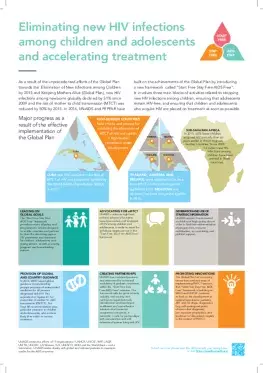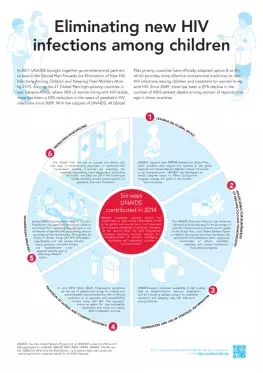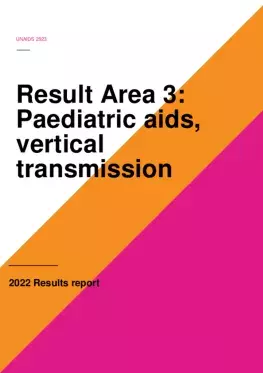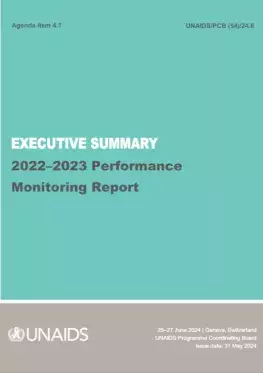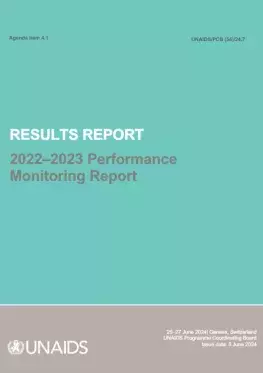AIDS-related deaths among children continued to decline in 2022-–2023. By 2023, 15 countries had been validated for the elimination of mother-to-child transmission of HIV (EMTCT). Botswana became the first high-burden country to be certified for achieving an important milestone on the path to EMTCT, demonstrating that an AIDS-free generation is possible even in countries with high HIV burdens. Twelve countries joined the Global Alliance to end AIDS in children and formed inclusive country teams to develop prioritized action plans to accelerate progress. Vertical transmission prevention programmes have averted 3.4 million new HIV infections in children since 2000. However, children still lag behind in the HIV response and many gaps remain to reach zero vertical transmission of HIV and have all children living with HIV on treatment.
Paediatric AIDS, vertical transmission
In 2022-2023, the Joint Programme intensified action to eliminate vertical transmission of HIV. Seventy-five of the countries supported by the Joint Programme have a national plan for the elimination of vertical transmission of HIV and implement the “treat-all” policy for pregnant and breastfeeding women. Clear guidance on criteria and processes for validation of triple elimination (HIV, syphilis and hepatitis B) was launched, with an emphasis on rights-based and integrated approaches for women, children and adolescents in countries preparing for validation of elimination.
Sixty-four countries supported by the Joint Programme have integrated HIV services for children into at least 50% of primary health care sites. By the end of 2023, over 90 countries were procuring paediatric dolutegravir, the WHO-recommended antiretroviral drug option for children. Efforts to improve HIV service delivery for children included the development of the UNICEF Paediatric Service Delivery Framework, which is being used in six high-burden countries. Health systems strengthening reached more than 10 million women and children with HIV and other health services, and 36 countries benefited from US$ 817.5 million in commitments to strengthen the elimination service cascade in the context of reproductive, maternal, newborn and childcare. However, urgent and more effective action is needed to increase treatment access for children living with HIV.
To address the need for greater global and national political will, action and resourcing to end paediatric AIDS, UNICEF, with WHO, UNAIDS Secretariat, PEPFAR, implementing partners, networks of people living with HIV and civil society, in 2022 co-convened the Global Alliance to end AIDS in children. Twelve 12 African countries have joined it to accelerate action.


